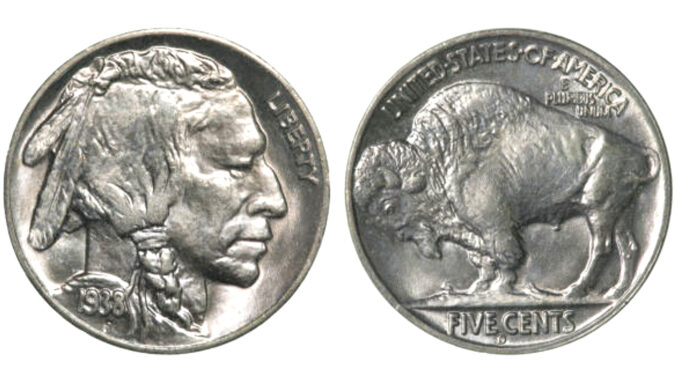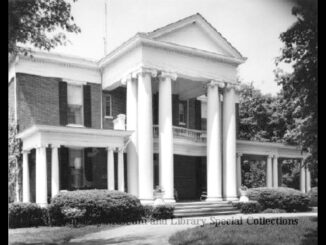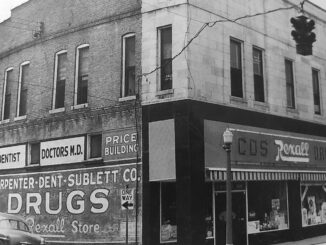
I was important once. I was shiny, bright, and a handsome piece of metal when I was minted in 1937. Unfortunately, I was not unique because many thousands just like me were made the twenty-four years before I came into existence. Yet, I have had an interesting life.
I was stacked and rolled with other Buffalo nickels like me, placed in a cloth bag, and traveled from Denver across the continent to New York. There I was dropped into metal containers until I was handed to my first human being. Then my adventures with mortals began.
Owned by a young man, I was jingled with other coins in his pocket until he passed me on to his little brother. The little one dropped me and I laid in the dirt, was run over by a car, and felt my life was over until I was found by a little old lady. Her dark coin purse was crowded and dark, so I was glad when she took me out. From her hand, I slid down a vending machine slot and hit bottom on my Indian head side. “Ouch,” I wanted to cry, but, of course, nickels can’t speak or feel.
Upon my deliverance from the vending machine, I was counted and tossed in with other coins. That was my best introduction to coins that were struck like me but had different faces, colors, and sizes. I was able to display my importance by turning from reverse side to observe side, showing off my clever faces. I didn’t make a very good impression because people in New York were not appreciative of bisons or Indians. In fact, I heard the New York Times newspaper reported the Indian head nickel was a disgrace. That didn’t affect my feeling of importance, however, because I knew I was useful.
For years I was used in vending machines for food, in gambling devices for amusement, even in mechanical pianos. I have served duty in automats dispensing sandwiches and desserts, and have been in demand in penny arcades. I appeared so prominent in everyday events that the name Nickelodeon was used to describe the cinema.
Flipping was my most unpleasant experience. Can one imagine anything more mind-twisting than being flipped over and over again? If the Indian head could cry out, it would have pleaded for a break from dizziness. I’m aware the nickel is the most useful for calling “heads or tails,” but don’t make an endless game of it like one group of teenagers did. Oh, my!
My most pleasant moments came from being held by an older gentleman. He would hold me between his thumb and pointing finger and rub me for hours. He kept recalling the first Buffalo nickel given to him in 1913, the year they were first made. I had been in circulation a long time before I met him, so his rubbing me did not damage my shine. In fact, I was so worn it was not possible to see my date anymore, although I could have told anyone I was made in 1937.
I haven’t seen many nickels like me lately. The Jefferson nickel won such popular praise, I faded from people’s minds. I hear people talk about collecting Buffalos and saving them, even sealing them up in plastic holders to show off to others. Now, how practical is a nickel if it can’t be circulated and used to benefit someone? I know there are several look-alikes, other Indian head nickels that are rare and valuable, but most are like me. I’m only worth less than a dollar to a collector. I’m ordinary but can be utilized in so many ways.
My value is more than just five hundredths of a dollar. My greatness is bigger than the five grams of mass or nearly two millimeters of thickness. You see, my experiences have taught me worth is not measured by size or monetary means. The merit of anything is determined by its desirability, usefulness, and importance. Therefore, I shall keep my high opinion of myself and express my worthiness.
I hope you, the reader of my memoirs, will do the same.
A national mint established by the Coinage Act of 1792 established the production of the nation’s official monetary in copper, silver, and gold. The first coins were the copper cents (1793), silver coins next (1794), gold coinage (1795). A half penny appeared in 1793 but was no longer minted after 1857. The last coin, the nickel, came in 1866, made of nickel and copper. It featured a picture of Thomas Jefferson on one side and his home, Monticello, on the back.
Predating the minting of the Buffalo nickel, there existed a number of expressions from President Theodore Roosevelt and a host of public commentators concerning the design of American coins not representing the unique history of the country. As a result, a design for a native American theme was chosen for the nickel. March 4, 1913 the new coin was introduced and won public approval because it was the only monetary unit that represented the historical roots of the United States. The obverse featured a right-faced image of a Native American Indian so realistically designed one can see cheekbones, plaits in the hair design, and details of feathers. The reverse side of the coin, featuring a left-facing buffalo, was equally praised for its in-depth design.
The Buffalo nickel was commissioned to be minted for the next twenty-five years. This revolutionary design won approval at once but over time critics of the coin expressed their displeasure. The design had easily eroded over time and the coin lost its unique features with use. Today, it has remained exceptionally popular with collectors as they seek to obtain coins that are fine, extremely fine, or especially uncirculated.
Southern Kentucky residents were pleased with the coin when it was produced because they were familiar with Native American Indians in their state, even though they had never seen a real buffalo in Kentucky. Yes, they had seen animals they called buffalo, thanks to the early French explorers in 1600s that explored from the north into territory to be named Kentucky. From Europeans’ experiences or knowledge of the southern and eastern animals of Africa, they recognized a similar animal in their travels and called it a “boeuf” and the name remains in continual use as “buffalo” today. Scientists refer to the species as Bison or Tatanka, the Lakota culture name. Everything in the Lakota lifestyle – food, clothing, shelter, blankets, fuel, tools, jewelry, and in ceremonies – related to the Bison, which this nomadic tribe followed mainly east of the Mississippi River.
Kentucky history lists many references to the Buffalo (Bison). Some documentation recorded bones discovered dating from 300 to 600 hundred years ago. In 1768 Daniel Boone reported seeing several thousand Bison in the Bluegrass area. It is recorded that buffalo meat was served at a meal at Fort Boonesborough, a notation that was confirmed by recent findings of archaeological digs. Similar findings have been reported throughout the commonwealth. Especially noted is the Gladie Bottoms in the Red River Gorge and Big Bone Lick in Boone County.
Buffalo, Bison, Tatanka, Iinnilwa in Blackfoot, Ivanbito in Navajo, Kute in Paluts – regardless of the name used, the animal played a significant role of our ancestors in Kentucky history.
-by Mary Alice Oliver
About the Author: Mary Alice Oliver is a Bowling Green native who is a 1950 graduate of Bowling Green High School. She retired from Warren County Schools after 40 years in education. Visiting familiar sites, researching historical records and sharing memories with friends are her passions.





